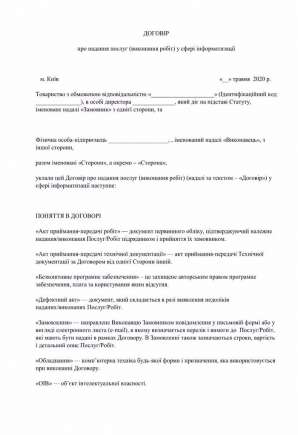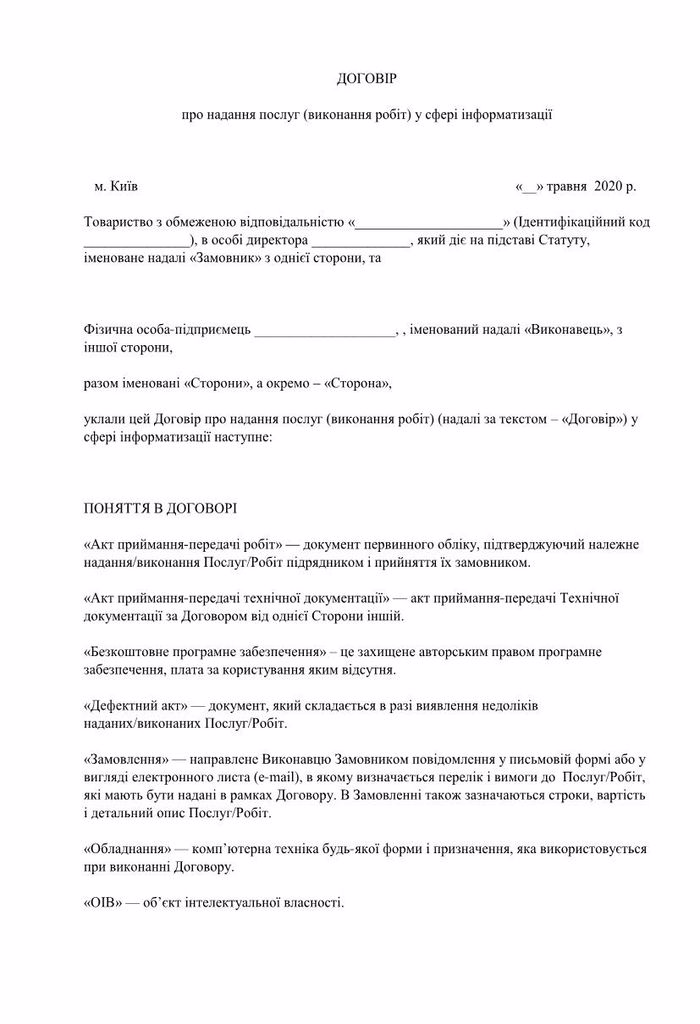How to register the transfer of intellectual property rights to the code in the contract for the creation of software?
Cost of services:
Reviews of our Clients
... our work on joint projects assured us of your high level of professionalism
Disputes over ownership rights to code or software are a common occurrence in the business operations of both IT companies and individual freelancers providing software development services. These disagreements often arise between the two parties, leading to contentious situations.
In this context, when we refer to software, we also include any graphics and audio elements created alongside it. When disputes can only be resolved through legal means, it becomes crucial for both sides to have a well-defined contract that explicitly outlines the ownership of intellectual property rights for a specific code or software. It is equally important for the parties involved to be able to substantiate their claims in court, demonstrating that the contractual agreement designates ownership of the code or its parts to a particular individual or entity.
In our experience, we have frequently encountered a challenge where clients require legal protection for their interests, but the contractual agreements are often drafted in a way that makes it arduous to establish why a particular section of code within the software should rightfully belong to the client, for example. While it is possible to win such cases, the first crucial step to safeguarding your business is to carefully prepare the software development agreement itself.
You may also like: Software Rights for IT Startups in Ukraine
What essential elements should be included in a software development contract?
The ownership of intellectual property rights to the created code or its components belongs to the contractor, such as an individual entrepreneur. If a company wants to obtain intellectual property rights to the resulting product, they must prove, in case of a dispute, that the code was specifically developed by that individual entrepreneur. The transfer of ownership rights to the code occurs when the client and the contractor sign the agreement, and it is crucial for the client to meet these conditions. Failing to do so will result in the court rejecting the client's claim, and the intellectual property rights to the code will remain with the individual entrepreneur.
In our practice, we pay close attention to ensuring that software development clients include detailed technical specifications for the contractor in every case. This specification covers various aspects, from specific sound requirements for a program to the desired on-screen outcomes of the final product.
Please note! Judges, who are often not IT specialists, need to understand that the deliverables provided by the contractor align with what is outlined in the technical specification.
Another crucial aspect of the contract is the clear and explicit transfer of the developed software. It is essential to specify the moment when the transfer of intellectual property rights occurs, which should coincide with the handover of the software from the contractor to the client. Failing to include this provision in the contract may make it challenging to prove in court that the transfer of intellectual property rights has indeed taken place.
Certainly, it is essential to have a provision in the software development agreement that clearly states the software will be transferred in accordance with a signed acceptance certificate of completed work document. This document serves as the pivotal moment when ownership of the intellectual property rights is officially transferred.
To ensure a robust record, the acceptance of completed work document should explicitly mention the physical medium through which the software is delivered or, alternatively, specify that the software is transmitted via email exchange between both parties.
Another critical aspect is to facilitate a transfer process that can be effectively demonstrated in a court of law, providing indisputable evidence that the software was indeed handed over.
This leads to another crucial consideration: the method of software transfer and how it can serve as evidence in court.
Drawing from our experience, we have found that the most reliable methods for transferring intellectual property rights are through email communication and physical storage devices, such as various types of media.
We strongly advise against using cloud storage services to transfer the complete code or its components. This is because granting access to the software as evidence in court would involve sharing passwords and potentially compromising security.
However, it is important to consider the requirements outlined in legal codes, as they serve as crucial evidence in a court case. For instance, if email communication is to be considered a valid method for software transfer in court, it is essential to include the designated email addresses for communication within the contract. Moreover, it is advisable to sign all emails using digital signatures.
Additionally, the contract should clearly specify the conditions for product transfer via email. In cases where the software is transferred using a flash drive or similar physical medium, the acceptance certificate should indicate that the transfer occurred upon signing the document. It should also include detailed information about the storage device used. This ensures that the court can examine the physical medium containing the software if needed.
All the recommendations provided in this article are based on our extensive experience and our commitment to simplifying processes for our clients.
If you want to enhance the security of your IT company's products or if you have any other inquiries regarding the operations of IT companies in Ukraine, please feel free to consult our specialists.






